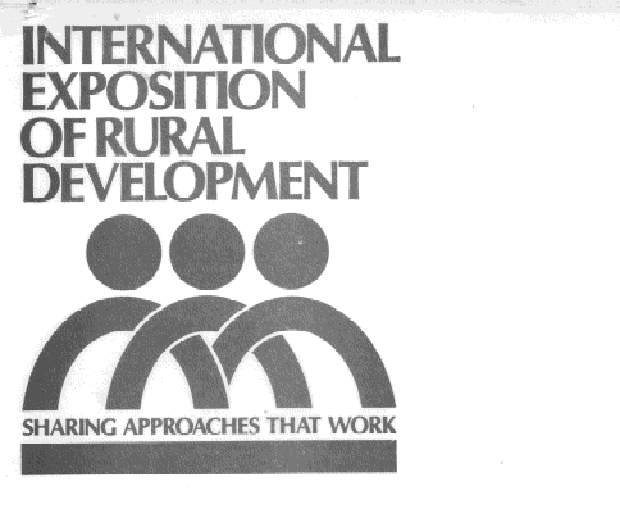

|
PHASE I COMPLETION
PHASE II PLANNING
PHASE III INITIATION
OPERATIONS MANUAL
IERD TASKFORCE
INSTITUTE OF CULTURAL AFFAIRS INTERNATIONAL
JULY 24, 1983
IERD TASK FORCE 23, July, 1983
I. The International Exposition Plenary Manual
A. The Ten Day Design 1
1. The Exposition Format 1
2. The Global Symposium 2
3. The Field Visit Workshops 3
4 The Closing Assembly 4
5. The Objectives and Aims 5
B. The Logistical Support 9
1. The Form of the Exhibit 9
2. The Technical Brief 10
3. The Official Carrier Statement 10
II. The Phase I Completion
A. The Documentation Process 11
1. The Process Outline 11
2. The Form 1: Preliminary Project Information 12
3. The Form 2: The Project Interview Information 14
4. The Form 3: The Project Directory Checklist 19
B. The RDS Format 6 20
C. The Delegations 21
1. The Delegation Participation Guidelines 21
2. The Delegation Orientation Seminar 22
III. The Communications Models
A. The Communications Manual (Under Separate Cover)
IV. The Financial Guidelines 23
A. The Five Steps To Funding 23
B. The Income Disbursement Rationale 26
V. The Organization Framework 27
A. The CoSponsor Briefs 27
B. The Supporting Organization Brief 28
VI. The Countdown Timeline 29
APPENDIX A: Finance Reports
APPENDIX B: Fifty Nations Coverage Strategy
APPENDIX C: Public Status Report
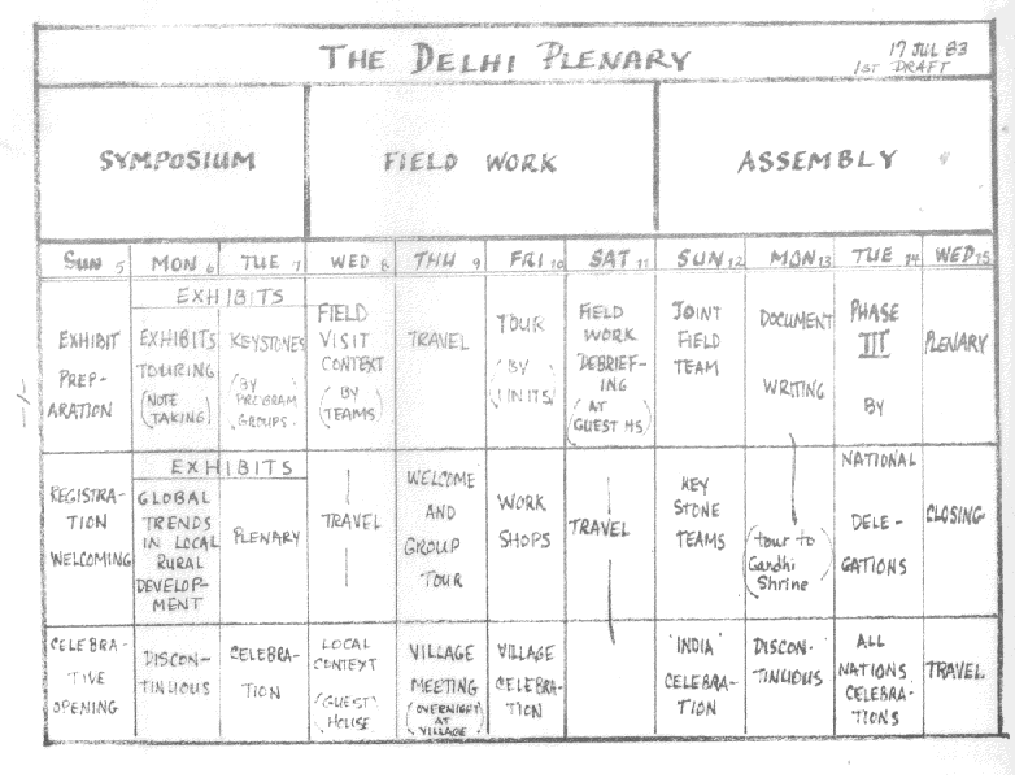 |
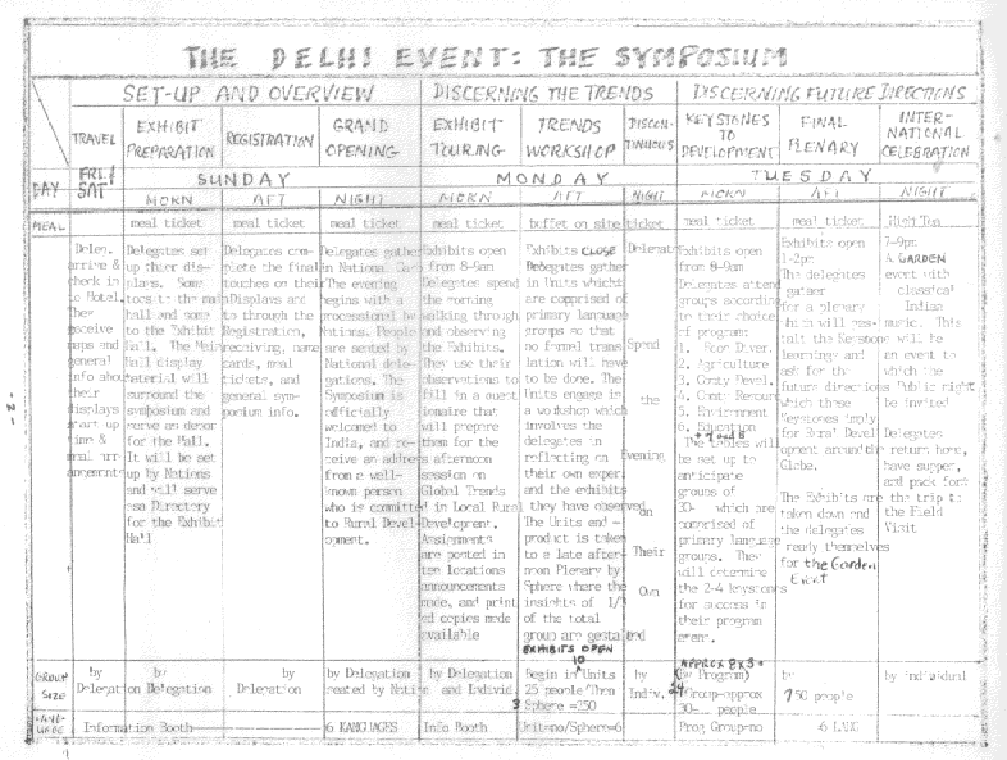 |
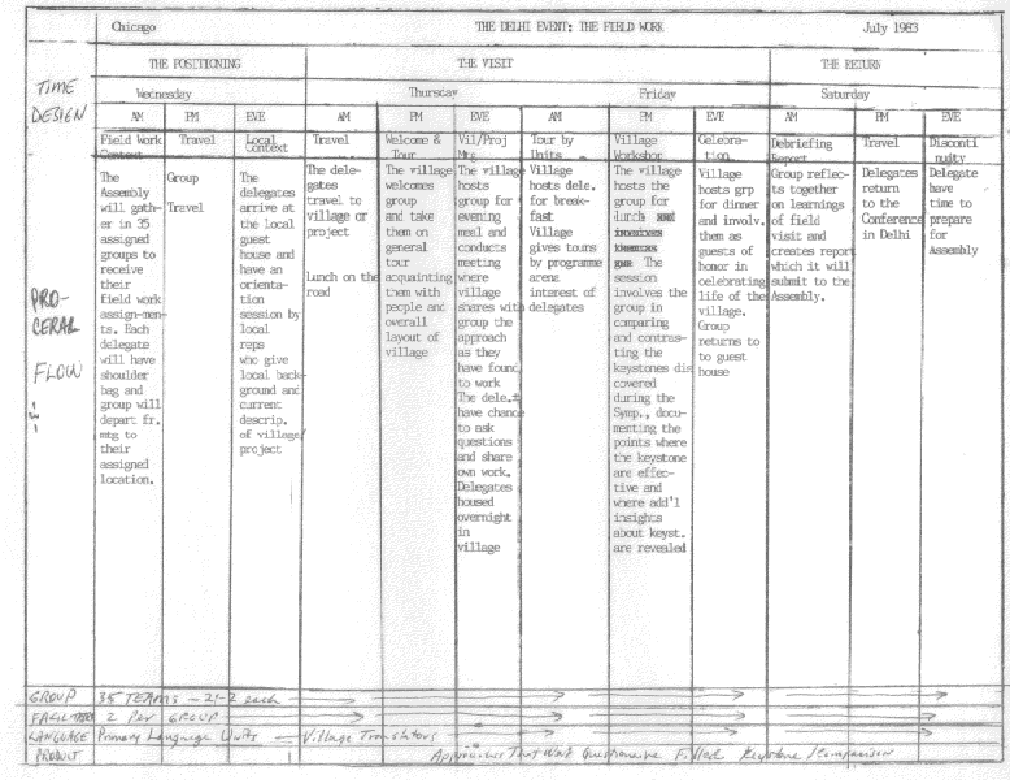 |
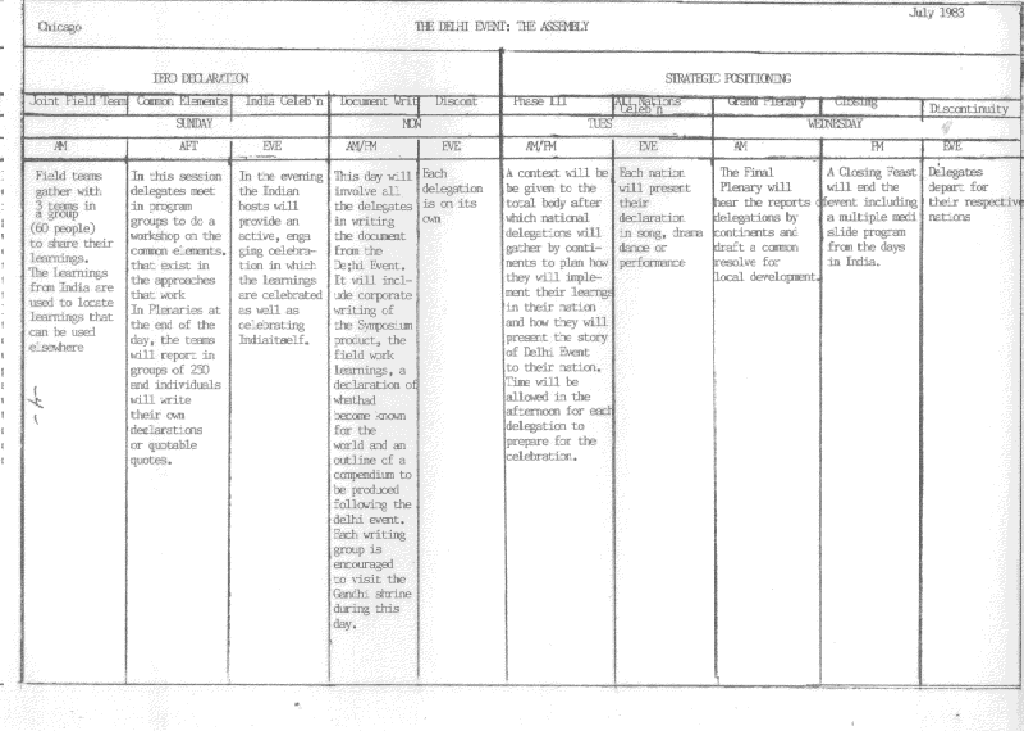 |
| RATIONAL OBJECTIVES AND EXISTENTIAL AIMS FOR DELHI PLENARY | |
| SYMPOSIUM | |
| Rational Objective: To establish a perspective on the global trends in local rural development as they are reflected in the keystones of major arenas of service in communities; to see the broad outlines of what successful local development looks like; to describe a screen for what is working in local development worldwide. | |
| Existential Aim: To experience the revelation of the corporate trends in the rise of a global movement in local rural development; to feel the depth of the common struggle to do local development; to decide anew how urgent local development is. | |

| Exhibits Tour Rational Objective: To present the diverse international features of local rural development in an impressive and informative means; to allow for maximum informal interchange among the delegates; to provide specific grounding for the Global Trends workshop.
Existential Aim: To allow delegates to experience the global implication of local rural development; to give delegates a sense of relatedness with local people from other parts of the world. Global Trends Workshop Rational Objective: To gain clarity on the global trends in local development in such arenas as health, education, etc; to give a global backdrop to local rural models and approaches that work.
Existential Aim: To have delegates experience the globality of trends that affect their local situation; to allow delegates to see the value of corporate methods early in the event. Global Trends Plenary Rational Objective: To bring focus to the trends discussed by the three major working groups.
Existential Aim: To give delegates a sense of the power of the total group and the historical significance of the IERD. Keystones Workshop Rational Objective: To discern the keystones in the several programme areas that are critical to the success of local rural development
Existential Aim: To give delegates a sense of responsibility for preparing the whole group for the field work experience. Keystones Plenary Rational Objective: To provide a screen through which to examine the projects to be visited in the field work; to discern possible future directions in global local rural development. Existential Aim: To release delegates to see that a focused approach to complexity is essential in rural strategy. |
FIELD WORK
Rational Objective: To test the work done on keystones
in the Symposium for applicability in actual projects in India;
to clarify the keystones discerned in the symposium in Delhi;
to see what is working in local development in India.
Existential Aim: To experience local development through the new glasses of the Symposium; to find out what other learnings are sparked by practical contact with other villages; to arouse concern about the urgency of local development .

|
Field Work Context
Rational Objective: To equip the teams for project visitation with introduction to screen through which evaluation will be done; to use field work manual and practice of configuration and transportation.
Existential Aim: To experience the relatedness of the field work visitation as the wave on which the symposium and assembly ride. Local Context
Rational Objective: To inform the team of the schedule for the field work visitation and introduce then to the geosocial realities and specifics of the project site operation.
Existential Aim: Towelcome and enhance the team's readiness for participation in the project visitation. Project Welcome and Group Tour
Rational Objective: To introduce the team to their first visual factual and spirit encounter with the project site.
Existential Aim: To honor the team's presence, enabling them to be open in the futu re evaluation of the project.
Village Meeting Rational Objective. To interface the villagers or project staff with the team in a sharing of the project history and development, operation, funding, staffing etc; team members sharing information or project they represent; summary of common experiences or learnings
Existential Aim: To experience the global relatedness of participating in local human development; sharpening of skills in evaluating a project through a structured dynamic of interchange. Tour (Small Groups)
Rational Objective: To visit project site by units of 56 people; to look for arenas of convergence/divergence of keystones and future directions, to see how project integrates into the local situation.
Existential Aim: to experience the actual work of the project; the relationship of the people to the projects; and to hold conversations with project workers and villagers Workshops Rational Objective: To hold a series of workshops with. the village that reflect on keystones., discern learnings and project into future replicability |
| Existential Aim : To affirm the work being done; to experience the eventfulness of actuation and to create a story that points to future implications.
Debriefing Session Rational Objective. To debrief the field visit team before return to Delhi; to write a team report on learnings and to summarize the team's reflections. Existential Aim: To allow experience by team of corporate debriefing, corporate reflection and writing, and victory of working as a team. |
ASSEMBLY
Rational Objective: To draw the fieldwork of the
Plenary together, to relate it to the keystones discerned in the
symposium and to develop implications for global local rural development.
Existential Aim: To have the national delegations
and steering committees experience creative leap in their imagination
as they build phase III plans and approaches for their nation
in light of their experience in the Plenary.
 | Joint Field Teams
Rational Objective: To review the happening, Of the field visits with two other field visit teams; to capture the immediate reflections in the field visits; to hear reports from three different teams.
Existential Aim: To experience their experience of what happened to them in the field visits; o get a more comprehensive picture of Indian projects; to locate which learnings are more important. Common. Elements Workshop
Rational Objective: To discern the common elements in effective approaches to development as seen through projects in India; to pool learnings from all the project visits; to gather learnings according to the keystone programme areas.
Existential Aim: To get an image of what was learned about project programmes; to be excited about articulating wet has been seen and learned; to decide what the group has to say to the world about local development Document Writing
Rational Objective: To put down in writing the findings of the Plenary; to create the form of the declaration to the work to be made from the Plenary; to outline the final document to be published from the IERD.
Existential Aim: To experience ,he power of corporate writing; to get a clear image of Phase III of IERD; to spell out the decision the plenary has reached about local development. Phase III Rational Objective: To give every national delegation an opportunity to work out the followup process for their nation; to provide a corporate experience in thinking through followup by continents; to apply and test learnings against their own local situations. |
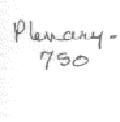
|
Existential Aim: To get an image of what they will do when they return home; to receive courage to use what they have learned with the greatest possible effectiveness; to create an intentional application of their learnings wherever they go. Final Plenary
Rational Objective To hear reports on all the continental follow-up plans; to understand what effective approaches have been discussed; to articulate the vision for IERD follow through.
Existential Aim: To get an image of the impact from the 10 days around the world; to realize the significance of the event in Delhi; to deepen the corporate resolve to accelerate lo al development. CELEBRATION IMAGES
Opening of the Plenary Procession of delegations in national garb banners. Speeches (4 sectors) welcoming (spheres)
Keynote address possibly Indian
Honoring event, historically significant.
Tuesday (end of Symposium) Tea on the lawn 7 9 p.m. Classical Indian music
relaxed, sophisticated
Dinner at hotels after 9:00
Sunday night (Assembly) Give to India to plan. Images: dancing, involvement, action
Dinner? Tuesday night (All Nations) Cabaret - by continents 3 stages? |
23 July 1983
FORM OF THE EXHIBIT
It is recommended that the exhibits in Delhi be composed
of the following components:
2. PROJECT EXHIBITS Assembled in national booths in a separate exhibit hall. Each project would have an identical sized panel with the following format:
a) Small global and national map locating the project
b) Aspects of the project identified on a programatic chart
c) Listed accomplishments of project with photo of each
d) Statement of the focus of the project
e) Visual chart of the scope of the project, including number of staff, initiation date, annual budget, number of people impacted, and funding sources.
f) Chart showing primary methods of the project
g) List of the key stones for the project
h) Additional panels would be added as required by
each delegation for audio visuals.
ARCHITECTURE OF THE EXHIBIT
The "building block" of the exhibition
will be a 1 metre wide by 28 metre high panel. These panels will
be rented on a turn key basis (including set up and removal) in
Delhi. National delegations will determine the size of their exhibit
and report to Brussels. These booths will then be integrated into
the architectural design of the exposition by our architects and
the panel suppliers. Panels will include electrical outlets &
lighting.
SHIPPING OF EXHIBITS
The delegations will then bring only their pictures,
charts, and audio visual materials to Delhi,
Normally these can accompany them as part of their
checked luggage and be documented at Delhi airport and noted in
their passports for re exportation when the delegate leaves. This
procedure is to be encouraged. Should a delegation have heavy
bulky things to bring they can be airfreighted to Delhi along
with proper import documents. The Delhi staff will clear them
thru customs and store them until the exhibit set up time.
HOW BIG ARE THE EXHIRITS?
The questionnaire has suggested the following:
1. People are imaging their exhibit size by the number of participating projects in their delegation.
2. They have indicated they need about 24 ft2 (2\ M2) or 1 pane per project.
3. The ratio of projects to delegates is 0.6.
4. This would indicate an exhibition of approximately
400 exhibits.
TYPICAL EXHIBITS
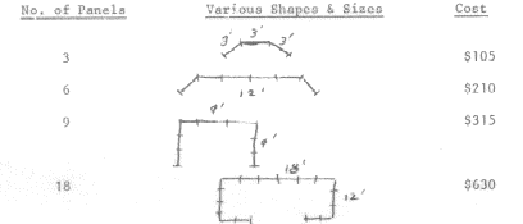
|
The exhibition part of the Delhi Event could then be made up of components
like these:
Delegations should select the number of panels they will need for their
exhibit as well as a suggested shape and send this information to Brussels.
The rental cost for each panel is $35 for the duration of the exhibition
and is to be paid by the delegation in addition to
the delegates fee.
AUDIOVISUAL INFORMATION
1. Voltage in India is 240 volts 50 cycle alternating current (AC)
2. VHS and PAL system video tape recorder/players and TV sets are available at a rental cost of $90/day from private sources in India. Delegates may choose to bring their own equipment as part of their checked luggage.
3. Super 8. 16 mm, & 35 mm movie projection equipment is available for rental on a limited basis. Costs will be indicated at a later date.
4. Delegations wishing to rent equipment should contact
the Brussels office.
AIRINDIA
AirIndia has been appointed as "Official Carrier " for the IERD. This is not a supporting organization relationship, but a business relationship. They will respond with services in direct relationship to the number of tickets we buy from them. Already they have shipped our India brochures and provided a ticket from India to the council for promotion purposes. Each of their offices have been contexted on the IERD and will contact your ICA office concerning travel of your delegation. Work out your travel arrangements and make your special requests (e.g. shipping of exhibit mat'ls) with their local office. Continents should try to consolidate their travel through a single air terminal to receive the best rates. Airlines normally provide a halffare ticket with purchase of 10 tickets and a fullfare ticket with each 15. Please give Air India the opportunity to match all lower fares you may be offered. This is a beneficial relationship limited only by our creativity and willingness to use it.
IERD 22 July 1983
The following schedule of documentation is intended
to provide some clarity on the sequence of activities and the
documentary tools available to create a data base catalogue of
the projects exhibited at the Delhi Event.
| STEPS
1. Broadening National IERD Participation | INTENT to form a National Steering to form a National Steering Committee to determine types of pro jects and interest to extend invitations to RDS events | TOOLS
Form I Rural Development Symposium |
2. Scheduling Site Visits | to see the projects
nominated by the NSC nominated by the NSC to initiate documentation process to narrow project list to those most likely to participate in Delhi event | Form II
or Form III |
| 3. Project
Description , Labs (PDL) | to have depth interview
with staff, community and sponsoring organizations to determine the project's primary contribution to the IERD to produce project description document to complete Form III for project brief | PDL Manual
PDL Event Form III |
The National Steering Committee is then ready to
make a public announcement of the projects selected and begin
the orientation process for the Delhi Event.
PROJECT BRIEFS (Form III) AND PROJECT DESCRIPTION
LAB REPORTS SHOULD BE IN BRUSSELS BY NOVEMBER 1, 1983. (IN ENGLISH
AND IN THE LOCAL LANGUAGE).
Duplicate copies of all forms and information should
be kept by the originating nations.
Projects other than those selected for the Delhi
event are included in the computerized data base and additional
information can be put in at any time.
.
| IERD Documentation
Form l/ p. 1 RURAL DEVELOPMENT PROJECT INFORMATION | |
| 1. NAME OF DEVELOPMENT PROJECT
2. PROJECT LOCATION (State, Region,
County, City) MAILING ADDRESS 3. NAME OF PROJECTSPONSOR | 4. KEY PROJECT CONTACT PERSON
(Name & Title)
5. ADDRESS OF CONTACT 6. TELEPHONE: WORK ( ) HOME ( ) | |
7. PLEASE INDICATE THE ARENA(S) OF FOCUS OF THIS PROJECT/COMMUNITY ORGANIZATION: HUMAN RESOURCES DEVELOPMENT _ NUTRITION AGRICULTURAL DEVELOPMENT _CARE & PREVENTION OF DISEAS CROP' PRODUCTION _EARLY CHILDHOOD EDUCATION LIVESTOCK & POULTRY PRODUCTION _YOUTH EDUCATION FOOD & FIBER PROCESSING _ADULT EDUCATION MARKETING _TECHNICAL & JOB TRAINING ECONOMIC DEVELOPMENT _FAMILY LIFE EDUCATION SMALL BUSINESS _CULTURAL HERITAGE EDUCATION _ELDERS RESOURCE DEVELOPMENT _WOMEN ENERGY CONSERVTION _LITERACY POTABLE WATER WASTE DISPOSAL ENERGY IMPACT COMMUNITY DEVELOPMENT ALTERNATIVE ENERGY PRODUCTION _HOUSING _TRANSPORTATION Other: (Please Describe) _COMMUNITY ORGANIZATION & POLITICAL STRUCTURES _COMMUNICATIONS _BEAUTIFICATION _INFRASTRUCTURE
_COMPREHENSIVE | ||
| 8 . H0W MANY PEOPLE ARE INVOLVED OR AFFECTED BY THIS PROJECT?
LIST THE VARIETIES OF PEOPLE (AGE GROUPS, CULTURAL GROUPS, ETC.)
ESTIMATE THE TOTAL POPULATION OF THE GEOGRAPHY WHERE THIS PROJECT IS LOCATED: How many local women, and in which age groups, are involved in this project? No. Percentage of total project population _ _%
Age: 6080 _ % 4060 _ % 2040 _ % 020 _ %
Are women encouraged to participate? Are they involved in the project planning team? | ||
| 9. WHAT IS THE TOTAL NUMBER OF THE PROJECT
STAFF HOW MANY ARE SALARIED? VOLUNTEERS HOW MANY STAFF LIVE IN THE PROJECT AREA | 10. APPROXIMATE ANNUAL BUDGET
11. SOURCE(S ) of FUNDING 12. WHAT OTHER RESOURCES DOES THE PROJECT DEPEND
ON? |
13. WHAT IS THE PR0NLEM OR 0PPORTUNITY ADDRESSED BY THE PROJECT?
14. WHAT ARE THE 0BJECTIVES OF THIS PROJECT?
15.WHAT ARE THE ACTIVITIES OF THIS PROJECT?
15 .WHAT ARE THREE KEY ACCONPLISHMENTS OF THIS PROJECT? | |
17.WHAT HAS BEEN LEARNED THROUGH THIS PROJECT THAT SHOULD BE SHARED WITH ALL PEOPLE C0NCERNED WITH RURAL DEVELOPMENT? | |
| 18. PLEASE BRIEFLY DESCRIBE YOUR PROJECT AS YOU WOULD LIKE IT TO APPEAR IN A DIRECTORY OF SIMILAR PROJECTS FROM AROUND THE WORLD. (OBJECTIVES, KEY CONCERNS, ACCOMPLISHMENTS, POPULATIONS OR RESOURCES AFFECTED, ETC.) I00 150 words.PLEASE INCLUDE PHOTOS & NFWSPAPER ARTICLES ON YOUR PROJECT IF AVAILABLE. 19. THIS PROJECT WAS INITIATED ON (DATE)___________ AND WILL BE COMPLETED ON _____ | |

|
| 1. Name of Development Project 4. Key Project Contact Person (Name/Title)
2. Project Location flailing Address 5. Address of Contact 3. Name of Project Sponsor 6. Telephone: Work ( ) Home ( ) |
| A. ISSUE SIGNIFICANCE
1. What is the important issue the project is out to address?
2. What is the urgency of the issue?
3. What are the signs that this issue is significantly being dealt with through the project? 4. How does the project coincide with national/global priorities? |
B. PROJECT INCLUSIVENESS
1. How was the project initiated? 2. A. Who initiated the project? _________________
B. How many local people were involved in the initiation? ____________
3. How is the project structured organizationally? 4. A. Is the project focused upon a particular group? Please indicate one or more. Whole community Men Youth Women Elders Children
B. What other groups are significantly affected by the project? If so, how?
5. What is the ethnic, civic, cultural or economic focus? 6. Does the project bring any special benefit to women who are a) unmarried mothers b) agricultural producers
c) other (please describe) If the answer to any of the above is 'yes' please state: 1) numbers involved 3) approach used
2) intent of the project 4) benefit realized 7. Does project evaluation monitor the effect of this project on women? What actions are planned to counterbalance any harmful effects? Address of the project Womens contact. |
IERD Documentation ProjectInformation Form 2 |
F. REPLICATION POTENTIAL
1. In what direct ways has the project had an influence beyond the community?
2. How has the project indirectly affected the surrounding area?
3. Beyond the shortage of time, people and money, what are the difficulties most often encountered in achieving the project objectives? 4. What special skills, equipment, or resource requirements (ie. inputs) would be necessary for the replication of this project elsewhere?
skills
equipment
resources
5. Where in your nation or the globe would this project be most replicable? |
G. LOCAL APPROACHES
1. How do people talk about their past, the change that has occurred and the future of the project?
2. Is there a conscious cycle of planning, implementing, evaluating and redirection, and how does it work? 3. What methods and techniques have been used effectively in the project? Please check and then describe how the method worked in this project. _ Feasibility methods __Implementation methods __Coordination methods _ Research methods __Organizational methods _ Training methods _ Planning methods __Motivational methods _ Funding methods _ Evaluation methods _ Documentation methods _ Financial methods
_ Other _ Other _ Other |
IERD Documentation Project Information Form 2 |
| 3. In what ways has the project improved the quality of life?
A. Health
B. Nutrition
C. Education
D. Environment
4. In what ways has the project strengthened the social fabric of the community?
A. Local decision making
B. Recovering cultural heritage
C. Facing future responsibility
D. Community pride and spirit
5. What new coalitions/partnerships have occurred because of the project? |
E. FUTURE SUSTAINABILITY
1. To what extent must the project depend on outside financial sources? Indicate a percentage.
Local State Federal Private
2. In what ways is the project costeffective?
3. A. How many people have received training because of the project?
B. What kinds of training have they received?
4. To continue the development which has happened;
what additional training must residents have?
what organization and structures must come into being or be strengthened? what new funding base must be secured? |
IERD Documentation Project Information Form 2 |
| 1. What organizations from the four sectors have supported the project?
PUBLIC (government) PRIVATE (companies) VOLUNTARY (groups) LOCAL (orgs.)
__________________ ___________________ ____________________ _____________________
__________________ ___________________ ____________________ _____________________
__________________ ___________________ ____________________ _____________________ |
C. LOCAL INVOLVEMEMT 1. A. How many people have been served by the project?
B. How many of the staff come from the local community?
2. During the life of the project, what have been the major shifts in the degree of local participation?
3. How have these shifts altered the design of the project?
4. In what ways do local people fund or otherwise assume responsibility for the project?
5. What are the current concerns related to local participation? |
| D. PROJECT RESULTS 1. What are specific accomplishments to date for each stated goal or objective? OBJECTIVES/GOALS ACCOMPLISHMENTS
a. 1) 2)
b. 1) 2)
c. 1) 2) 2. In what ways has the project strengthened the local economy? A. Number of jobs generated B. Amount of money generated |
4. What new methods have you discovered or developed that have been helpful? 5. What are the three innovative features to be shared about the approach used in this project?
A.
B.
C.
6. What name would you give to the APPROACH used in your project?
7. At which stage are you in program development/implementation or planning at this point in time?
8. Have there been changes in methods employed since inception of the project? If so, why were the changes made?
9. If there is a formal process of evaluation who is involved, what form does it take and what are the channels through which information flows?
10. What problems remain for the project to overcome and how do you expect to accomplish this? 11. What are the standards by which you measure success or failure? |
CONTACT
Project Name ___________________ Initiation Date _________
Project Location _________________ Last Update ___________
Nation: _______ CAR: ________ Office: _________Project _________
Spon. Org:-_____________ Suprt.Org: __________________________
Contact: ______________________ Position: __________________
Address: ______________________ City/Code _________________
Telephone: RDS: _ Intrv: _ PDL _
PROGRAMME ARENAS
Agri Envir Organ Erly Trng Family Compre
Indv Infra Elder Youth Health Educ
Comrce Hsng Litrcy Women Techn Employ
Other
PROJECT TYPOLOGIES
Geography Stage Sponsorship Beneficiary Accessibility
Support
Arid Demo Local Indiv Imedi Priv
HiAg Expnsn NGO Group Interm Publ
Fringe Repletn Gov't Village Remote Volun
Other Other Priv Other Other Local
DOCUMENTATION FACTORS
BACKGROUND PRACTICAL LOCAL REPLICATION ADDITIONAL
DESCRIPTN ACCOMPLISHMENTS PARTICIPATION POTENTIAL
INFORMATION
Perceivable Planning Training
Problem Results Process Components Literature/
Arena Brochures
Benefit Project Methods
Impact Initiation & Models
Project
Activities Community Management Extension Audio
Impact Skills Intent Visuals
RDS Approach Operational Technical Annual
Keystone Learnings Capacities Feasibility Reports
Relations
Lateral Local Financial
Influence Inputs Feasibility
Journey
Timeline Project Human Leadership External
Journey Factor Availability Evaluations
Specific Documentation of Women's Participation
AVAILABLE FORMS LOCATED AT
I______ II ______ III _______ OTHER _________
IERD RURAL DEVELOPMENT SYMPOSIUM July 21, 1983
Based on the Rural Development Symposium Manual from
Brussels dated March 1983, and the addendum dated April 19, 1983,
the following designs are recommended for a three session and
a twosession Symposium.
SESSION I:
A. Project Exhibits
B. Opening Address, or Concept Paper study or a Spin
on Images and stories of global Rural Development
SESSION II:
SESSION III:
SESSION I:
DURING THE NOON INTERMISSION -- see project exhibits
E. The Anticipated Directions Conversations.
The most important part of these designs are the
sessions on Indices and Key Learning and the Documentation Screen.
IERD DELHI EVENT PARTICIPATION GUIDELINES - 22 July
1981
THE FOLLOWING GUIDELINES ARE TO ASSIST NATIONAL STEERING
COMMMITTEES
A. NATIONAL DELEGATIONS
(1) These comprise the official delegates from each nation. NSC's should determine whether each national project to be exhibited in Delhi will be accompanied by delegates from that project, or whether some delegates will act as representatives of more than one project.
(2) It is hoped that the National delegations will be composed of persons in the following categories and approximate proportions:
GROUP I 20% GROUP II 80%
Experts Project residents
Senior Officials Local citizens
Policymakers/ Planners Local Practitioners
GAB members Field workers
NSC members NSC members
In GROUP II, project residents and local citizens should constitute not less than 50% of the total. It is also desirable that each delegation should contain one bilingual speaker (English/local language) for every 45 members.
(3) The symbolic effect of the attendance of women is crucial. Women should comprise not less than 33% of the National delegation.
(4) Projects relating primarily to youth, or to the elderly should, o£ course, be represented by persons in these age groups as well as those in other phases.
(5) The importance of the presence of the local residents
or local citizens at the Delhi event cannot be overstressed. A
substantial number of local people are already in a position to
fill leadership roles on their return to their nations. Others,
it is felt, will be so impacted by the Event that they too, will
be able to play effective roles. At the least, their communication
at the local level of what the Event has meant to them will have
a powerful ripple effect in their own and neighboring communities.
The Event, therefore, must be seen to he a declaration of the
significance of the individual in the community at the grassroots
level; and it must give local leaders from many nations the opportunity
to see themselves as acting on behalf of the globe within their
own locales.
B. ATTENDANCE OF PERSONS OTHER THAN NATIONAL DELEGATES
(1) In considering the persons, other than national delegates, who will attend the Event, space is a primary consideration. It is expected that there will be 750 delegates plus approximately 130 additional persons (facilitators, enablement, etc.). The maximum space at the plenary meetings allows for 1000 (1200 at the opening event) but other designs will accommodate only 800 or 900. In addition to the .National delegates, organizations such as the Ford Foundation, the cosponsors and International agencies will doubtless wish to send representatives. A significant representation by the Government of India is also anticipated.
(2) It is recommended that a minimum of one member of the local ICA staff from every resident nation sending a delegation, should attend the Event.
(3) The status of a ''nonparticipating observer" is thought not to be practical, in that in a participative event of this nature, it would be very difficult to distinguish between those who are entitled to speak and those who are not. Cosponsors, government representatives and the like, referred to in B(1) above, will be encouraged to participate actively.
(4) Only National delegates and people referred to
in B-(1) and B(2) will be encouraged to attend. Other persons,
should they press to be allowed to come, should not be accepted
for registration until all the National delegates have been selected
(Dec '83 or Jan. '84)
C. FEES
All international delegates and persons referred to in B will be required to pay the delegate fee of $2000.
IERD Page 22
July 21, 1983
INTENT: To prepare delegates going to India Plenary
event to be able to present their nation's story, individual project
summary reports, exhibits, RDS findings and to explain the logistics
of travel and accommodations. In addition, the Delegate Orientation
Seminar should familiarize delegates with the process and procedures
of the India Plenary event.
I. Welcome and Introductions
A. Timeline and outline of India Plenary event
B. Travel, logistics and accommodations
II. Delhi Event process and procedures
III. Participation preparation
A. RDS Document Study
1. Keystones and Learnings
2. Uniqueness as representative of our nation
B. Report Preparation Workshop
1. Project Report Study
2. Exhibits Review
3. Workshop on preparing the report or reports
4. Final presentation preparation
IERD FUNDING GROUP
INVOLVE THE STEERING COMMITTEE AND THE GAB . .
The key to funding is to get the national steering
committee behind it. The more they believe in the budget, the
more they will take responsibility for raising it. They may have
a separate bank account for the IERD as in London or Canada, or
IERD expenses may simply be noted separately on ICA books. The
key to getting the involvement of the NSC in the US was a series
of events in which the members of the NSC experienced that they
were essential to the IERD happening locally, and they saw that
it was possible for them to win at it. Fundraising receptions
and benefit dinners have become a key tactic for them. In the
Netherlands, a steering committee member gave $5,000 seed money
to begin the work of the NSC. They live out of the story that
the Netherlands' participation in the IERD depends on them. The
Japanese steering committee has taken charge of the funding plan,
with corporations in Japan in a systematic fashion, and is getting
access to funds to which the ICA would not have otherwise had
access. In Mexico the steering committee was encouraged to see
how they could raise the funds when they saw the budget broken
down into manageable bites (several of which were the contributions
of the NSC members). We are currently working out ways in different
places around the world to use the influence of the GAB and the
cosponsors for entree to corporations, major foundations
and government funding sources.
FUNDING PLANS
One of the keys to IERD funding is a good funding
plan. The more the NSC participates in its creation, the more
involved they will be in its implementation.
To create a funding plan, the group consensed on
its planned activities for Phases I, II and III, costs them as
accurately as possible, then begins to consider sources to cover
the total coat. It is important to know not only who the possible
donor sources are, but also how they function and who in the group
has a personal contact in the organization, or knows someone who
does. If no one does, put the organization on a "hold"
list, and do not target an amount for it. As the funding work
progresses, some one may turn up who can provide an introduction
to the desired target.
Once sources have been targeted, a "guestimate"
of the amount each one may be able to provide should be created
for each target. The total of these estimates should be at least
three times the amount needed, maybe up to five times as much,
depending on the strength of the introduction and how well refined
the story is.
The funding plan should be monitored by the whole
group and revised regularly to reflect results achieved. Wall
charts hold the picture before the group. Materials are created
which tell the story in a manner appropriate to the local situation.
Printed materials should also indicate the budget.
In addition to the foundational tactic of paying
visits to people in their offices and writing proposals, experiments
with a number of new tactics are taking place. These include securing
tickets inkind from airline companies to cover the travel
portion of the budget, receptions hosted by a benefactress, help
from an Indian ambassador in approaching other embassies, use
of films, videos and slides, using cosponsors and GAB members
in funding events, and benefit dinners (please see report in council
handouts).
GET YOUR FUNDRAISING MATERIALS TOGETHER
.
Create a brochure that is tailored to tell the story
of the local and national benefits of the IERD globally and the
global benefits locally.
Create a simple statement of the purpose of the whole
IERD from the point of view of your nation.
Create a development budget for your nation that
includes all three phases of the IERD for use in public materials.
Make a clear statement of the relationship of your
nation's budget to the global funding plan.
Build a dossier that includes descriptions of national
and global supporting and cosponsoring organisations.
As soon as delegates are chosen, include dossiers
of their "approaches that work" in the dossier.
Gather letters of recommendation or copies of speeches
in support of the IERD for inclusion in a presentation packet.
Make maximum use of the slide shows, videos, and
press clippings available globally.
AGGRESSIVE MEDIA CAMPAIGN.
REFER TO COMMUNICATIONS MANUAL
Using the print and broadcast media is a flanking
manoeuvre designed, among other things, to raise funds. When a
local newspaper and/or radio station has publicized any aspect
of the IERD programme, credibility is immediately established.
Ways to get full use out of this for funding follow:
1. Design a 4week media blitz which highlights
activities taking place around IERD. (Think local coverage first
national will follow). Use events like RDS, PDL, project visit
blitz or the official announcement of the national delegation.
Have multiple newspaper series, radio and TV public service announcements
along with talk shows and posters. This will raise the public
consciousness and create an environment favourable to a threeweek
development for national, local and/or delegate fees blitz on
corporations, foundations and individuals.
2. NSC and GAB members may be used as third party
to talk about why they are involved with the IERD. Their presence
at a fundraiser, guest speaker, RDS events and the like
increase the interest of the media.
3. Intentionally seek people in the media field to
be members of the NSC for purposes of usingtheir connections
and skills.
4. Ask existing NSC/GAB for advice as to whom to
contact for help.
5. Set up interviews with people in the field of
media for advice.
6. Human interest stories are of great value, especially
in the local print and broadcast media.
7. Have a private sector NSC member hold a luncheon
for his or her business contacts and do an IERD presentation.
Send out press releases for them.
INDIRECT FRAMING
Events such as the international RDS (see manual)
held in New York and Washington, DC, where people who had worked
internationally from the four sectors were present have resulted
in new contacts amongst the participants.
The sixweek guild series held in Washington
about the IERD and approaches that work had similar results. Some
countries have joined umbrella NGO organizations and attend conferences
on topics related to rural development.
Again, the NSC and GAB can be useful in framing Boards
of Directors and corporations. Crossindexing many boards
often reveals a ready network to work with for funding and new
NSC members.
In order to guard the ability to pay for the expenses
related to Phase II, as they are needed before and during the
Event, ALL DELEGATE FEES need to be sent to ICAI directly. These
fees will be used only for Phase II expenditures .
The collaborative nature of the National Steering
Committees with ICA and the NSC's participation in creating the
budgets suggests the system for handling IERD monies is of critical
importance. The following are some guidelines that may be helpful
in dealing with monies:
1. In many cases, the ICA is the most convenient
account to use in order to assure charitable receipts. Therefore,
an "ICAIERD" account needs to be opened. Signers
of cheques could be any two of three people, two of which are
either ICA board members ant/or NSC members and the third ICA
staff person.
2. Monies deposited to the IERD account would be:
1. Cheques made out to ICAIERD.
2. Monies made out to ICA but designated by the donor for the IERD.
3. Rural Development Symposium sponsor's monies.
4. Funds raised by local Regional Steering Committees,
either for local Steering Committee purposes or for National use.
3. Cheque requests would be made out giving rationale
for usage of the funds (i.e. turnaround monies raised for
travel etc. ) . These requests would be sent to the Central Office,
and subject to the availability of funds, the "authorizing
committee" (comprised of 4 people, ICA staff and NSC member)
would give a recommendation for disbursements at that time. Each
nationally built budget would provide the context for decision
making.
4. Upon agreement, cheques for the agreed amounts
would be issues, signed and sent to the requesters.
5. Where there are regional subcommittees, who are
deciding their own level of activity, money raised for local program
(RDS) costs can be turned around in the system without any invoicing
requirements.
APPENDIX A
THE INTERESTS AND RESOURSES OF THE UN SPONSORS/SUPPORTING
ORGANIZATIONS
COSPONSORS
. UNDP ( United Nations Development Programme. HQ;NY
) works with 150 governments and 26 international agencies to
promote development in rural and urban areas. It provides financial
and technical support to 3500 projects. It coordinates the field
work of other UN agencies, including the UNFPA.
. UNFPA ( Fund for Population Activities. HQ;NY )
aids the formulation and implementation of population policies
in developing countries. It is concerned with the status of women
and has programmes to promote social justice through participation
in development by women, children, youth and the aged particularly
in the poorest areas of the world.
. UNICEF ( The UN Children's Fund. HQ NY ) covers
all development activities affecting the welfare of children.
There is some emphasis on health [including infant nutrition,
drinking water, sanitation) and education. Related services to
mother and community groups are promoted.
POSSIBLE COSPONSORS
. WHO ( World Health Organization. HQ;Geneva ) is
concerned with primary health care, medical technology relating
to Third Word problems,. It is concerned with socioeconomic
infrastructure at the local level, and to work crosssectorally
( cf. our four sector approach ). STATUS: approached, almost finalized.
. ILO ( International Labour Organization. HQ;Geneva
) was originally set up preUN to introduce
international standards aimed at protecting employees from predatory
employers. It is the only UN agency which is tripartite is its
mode of operation; the three sectors involved being government,
employers and employees. The ILO is concerned with human resource
development; more recently in the rural, and with some emphasis
on women. STATUS: not yet approached.
POSSIBLE INTERNATIONAL SUPPORTING ORGANIZATIONS
. IFAD ( International Fund for Agricultural Development.
HQ;Rome ) is substantially supported by the Organization of Petroleum
Exporting State (OPEC). Its emphasis is on rural credit. STATUS:
approached.
. FAO (Food and Agriculture Organization. HQ;Rome) is the lead UN organization on rural development. Previously its activities had a technological bias. Now it promotes comprehensive development, institution building at the local level, and peoples' participation. STATUS: The ICAI has been offered by the DirectorGeneral formal 'liaison status', under which we shall be invited to be represented at FAO meetings at which matters of mutual concern are discussed, and be given other privileges. The official status will be effective from the date of our affirmative reply.
Page 2
1. Up to now Supporting Organizations have been perceived
as government agencies, NGOs, service clubs, business corporations
and associations which at the national level would
be willing to put resources behind the country's preparation for
the Exposition; and to allow their names to be listed as supporters.
2. We now propose a change. In future there will
be two categories of Supporting Organization as defined below.
SupportingOrganizations would be enrolled on specific invitation,
and be prepared to have their names lisle as such in our promotional
material. Their support should apply to Phases 1,2 or 3. They
are: . International Supporting Organizations and . National Supporting
Organizations.
INTERNATIONAL SUPPORTING ORGANIZATIONS
3. First, quite specific organizations who would
broaden the base of our authorization and support; and who would
provide access to specific networks and expertise. Namely:
IFAD, FAO, UNESCO, UNU, International Institute for
Environment and Development . University of the West Indies, German
Foundation for International Development
4. Secondly, any organization, from any sector, giving
substantial resource support that is relevant to IERD activities
in more than one country . For example, CIDA, DANIDA, NORAD, SIDA,
foundations, service clubs headquarters), major universities,
regional development banks, INGOs, multinational corporations,
international banks, research organizations.
NATIONAL SUPPORTING ORGANIZATIGNS
5. Similar to para 4 above, these will consist of
any organization, in any sector, which is willing to provide substantial
resources to promote any phase of the Exposition.
ADMINISTRATION
6. As in the case of members of the Global Advisory Board, the enrollment of International Supporting Organizations will be coordinated through Brussels. With National Supporting Organizations the procedure will be analagous with the NSC.
s
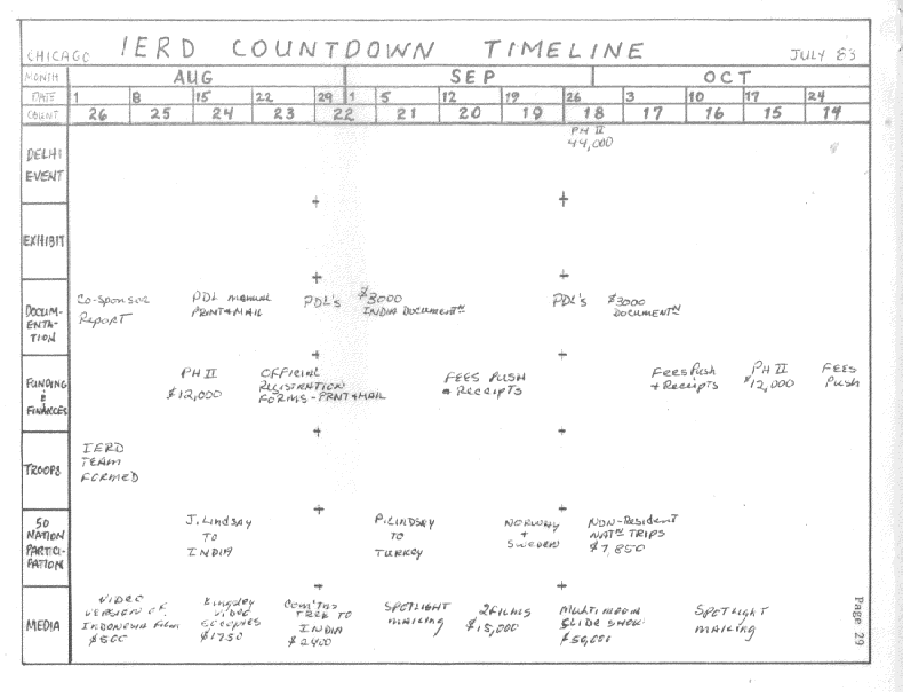
|
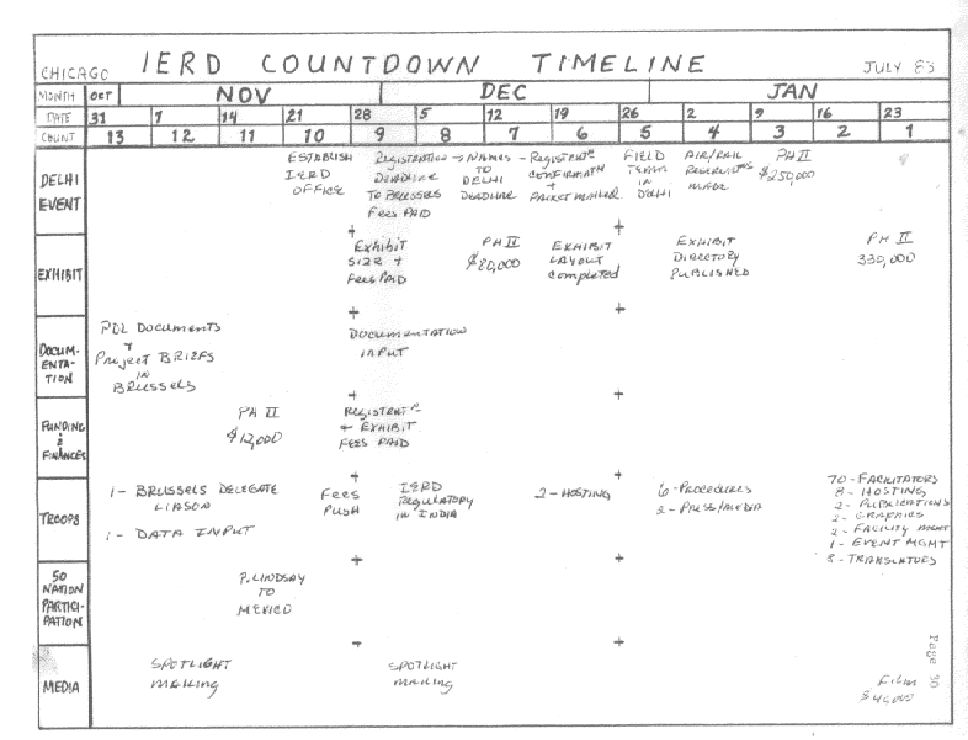
|
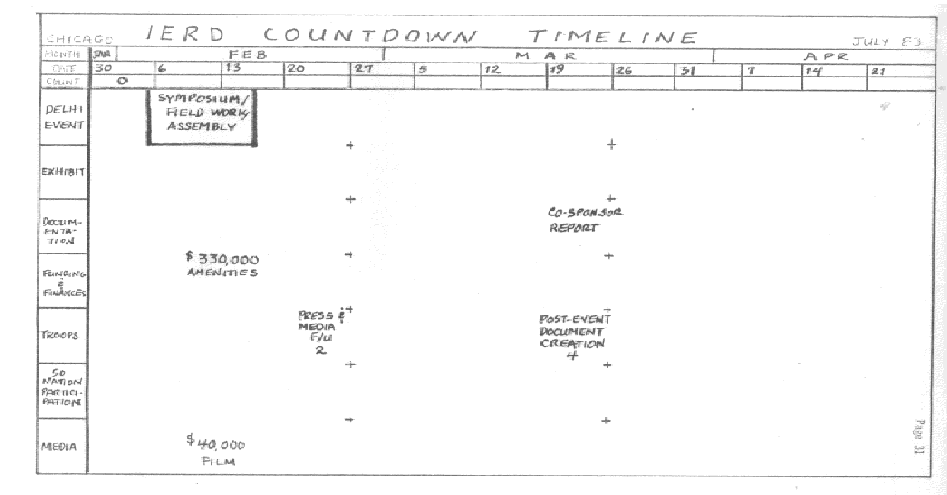
|